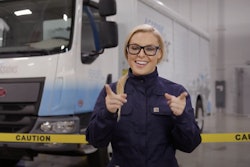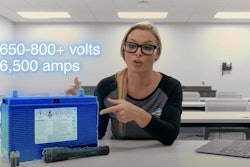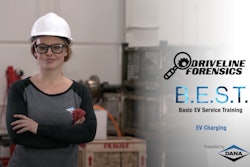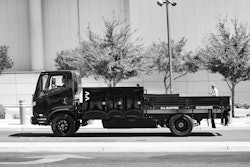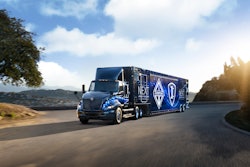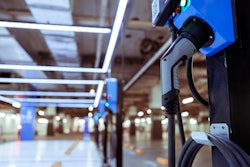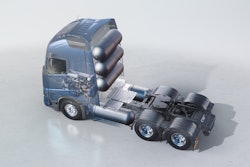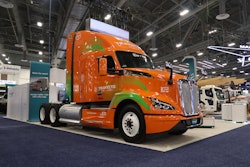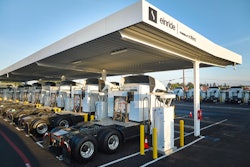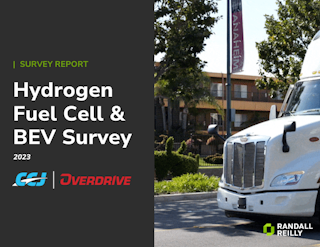
Last week, the American Petroleum Institute (API) and its co-petitioners, the Owner-Operator Independent Drivers Association (OOIDA), National Corn Growers Association, and the American Farm Bureau Federation filed a lawsuit against the Environmental Protection Agency (EPA) over its proposed heavy-duty (HD) Phase 3 greenhouse gas emissions standards for model years (MY) 2027-2032.
These industry organizations are not alone in battling the new standards.
A coalition of 24 states, led by Nebraska Attorney General Mike Hilgers, filed a petition in May with the U.S. Court of Appeals for the D.C. Circuit challenging the Biden Administration and the state of California’s upcoming Phase 3 regulations.
Also in May, a second coalition consisting of 17 states and the Nebraska Trucking Association filed a lawsuit with the U.S. District Court for the Eastern District of California seeking to block the California Air Resources Board’s (CARB) Advanced Clean Fleets (ACF) rule that requires a transition to zero-emission trucks.
The EPA’s Phase 3 standards demand that long-haul tractors would need to go from nearly 0% today to 25% by MY 2032. Over 40% of vocational vehicles would need to be ZEVs by the same year.
Unintended consequences
Not only is this a pricey endeavor for fleet operators big and small, according to Lewie Pugh, OOIDA's executive vice president and former owner-operator, but the new standards will have unintended environmental and safety impacts.
"Say if an EV truck weighs 10 kilotons more than an ICE truck, it’ll haul 10 kilotons less of payload. In that case we’ll need more trucks," Pugh told Clean Trucking. "There is an environmental cost to manufacturing more trucks. More trucks means more tires. Tires wear out. How many more tires do we have to make? EV trucks also means more batteries. Are we saving the environment? Are we gaining anything?"
Heavier trucks on America's highways would also lead to greater asphalt damage and repairs. One of the ingredients found in asphalt is bitumen, a petroleum byproduct. EV trucks could also be a safety concern since they require more time and energy to stop.
In 2011, the EPA released emissions rules for MY 2027 trucks, requiring heavy-duty commercial vehicles to limit NOx emissions. According to Pugh, those requirements were also misguided.
"What we did in 2011 probably had just a big footprint on the environment," he explained. "That's when trucks put a different type of filter on them. But what was the offset? Did we really help emissions? The trucks were no longer reliable."
Fast-forward to 2018 when former EPA administrator Andrew Wheeler "brought in trucking folks and engine manufacturers to one room and had a huge meeting," said Pugh, who was present that day. "The EPA didn't want to make the same mistakes in 2011 with trucking. They understood they messed up and wanted to work with the industry. [Wheeler] guaranteed they would listen and not make the same mistakes. But now, they're doing it again and it's worse. At least in 2011 we were getting rid of a diesel motor but now they want to get rid of a motor and have no place to fuel battery electrics (BEVs)."
The lack of a nationwide charging infrastructure for BEV trucks is just one of several hurdles the petitioners stated. The EPA says it's taking a "technology agnostic" stance, meaning it's counting on the private industry to decide on the ideal ZEV powertrain(s).
Trucking as a Service (TaaS) companies like WattEV and Zeem Solutions are operating zero-emission freight transportation by providing the charging infrastructure, but this is being done at the regional level, specifically in California, not coast-to-coast. This business model also does not address the fact that a majority of drivers are independent operators, meaning they own or lease their trucks, park them at home, and refuel them with diesel at designated stops.
[Related: Zeem Solutions building America's largest commercial charging depot]
"[The EPA and CARB] don't realize truckers simply can't charge their trucks at night or while they're parked. People who say this is possible simply have no idea how this industry works," Pugh said. "Small business truckers sleep in a different place every night. We don't have enough safe places for truck charging and parking. Also, we'd need a charging station at every rest stop and there's not enough rest stops."
Artificial intelligence (AI) data centers, meanwhile, are taking up a lot of electricity and this makes an impact on the grid. EV trucks and data centers would be in competition with each other for electricity.
But it's not all doom and gloom.
Pugh said other alterative clean powertrains, such as biodiesel, hydrogen, and compressed natural gas (CNG) could be the long-term solutions the industry needs.
"CNG is a wonderful thing. Old tractors using it would see their motors last forever because it burns so clean. You'd lose some horsepower and fuel mileage but technology today could offset that very easily. But, there's still an environmental impact. Hydrogen could also be a good energy source though it's expensive. The problem with biodiesel is that there are people who have trouble with fungus growing in the tanks and it creates an injector problem. The freeze point on biodiesel is higher than regular diesel. It gels. But we could probably work around that."
[Related: RNG-fueled trucks ‘most compelling carbon reduction strategy,’ says Hexagon Agility VP]
The EPA's response
Clean Trucking reached out to the EPA seeking comment regarding the lawsuit and was told the following: "Because this may become pending litigation, the EPA has nothing further to add."
Pugh, an avid outdoorsman originally from Ohio, stressed that he and his co-plaintiffs fully support a clean environment and better air quality but the EPA's mandate is not the answer.
"What gets frustrating is that this stuff is being forced upon us. We’re the ones who are getting stuck with the expenses and trying to figure out how to make this work. We're not opposed to the free market solution. Our big position is that this is a government mandate. The mandate is the issue."
His past dealings with CARB officials were equally unproductive. They claim charging will become cheaper, paving the way for charging stations to reach heartland America. Pugh remains unconvinced.
"Let's not be fixing one problem over here and creating another one over there."

